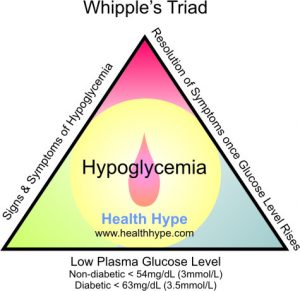Low Blood Sugar Range

Diabetes can be any one of several metabolic diseases that affect the way the body metabolizes glucose, this means that for many people staying above the low blood sugar range can be a real concern. While diabetes isn’t the only culprit, it is usually to blame whenever a person suffers a bout of low blood sugar, and low blood sugar can lead to feeling weak, the inability to think clearly, and even coma and death. Usually the blood sugar should be somewhere between 60 and 100 mg/dl, though in some cases those with blood sugar abnormalities may have unknowingly functioned outside the normal range for so long that their blood sugar may be as high as 300 without their feeling it and a low blood sugar range could go as low as 30-40 mg/dl. At 30 mg/dl a normal person would at least be unable to think clearly and would probably be comatose.
When a diabetic or someone suffering from a similar metabolic disease begins to suffer from low blood sugar it is important that they get some type of simple sugar into their body while they are still conscious and able to swallow correctly. Fruit juices, sugar, non-diet colas, and candy are great sources of fast acting sugars that can quickly raise the blood sugar level. It should be remembered, however, that these types of sugars are a quick-fix, and will rapidly raise the blood sugar level and just as rapidly be depleted and allow it to fall. In order for blood sugar to be maintained for the long term, the person suffering from a low blood sugar range needs complex carbohydrates like peanut butter and crackers, or better yet a full meal.
If the sugar continues to fall into the low blood sugar range unconsciousness will quickly result. Never attempt to give any type of food or drink to an unconscious or nearly unconscious person as this can lead to the material being sucked into the lungs which will result in a severe infection or death. If the person has lost consciousness due to low blood sugar the only way to take care of the problem is by rapid emergency medical treatment which will consist of a glucose solution being given directly into the bloodstream via IV.

